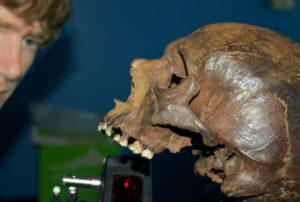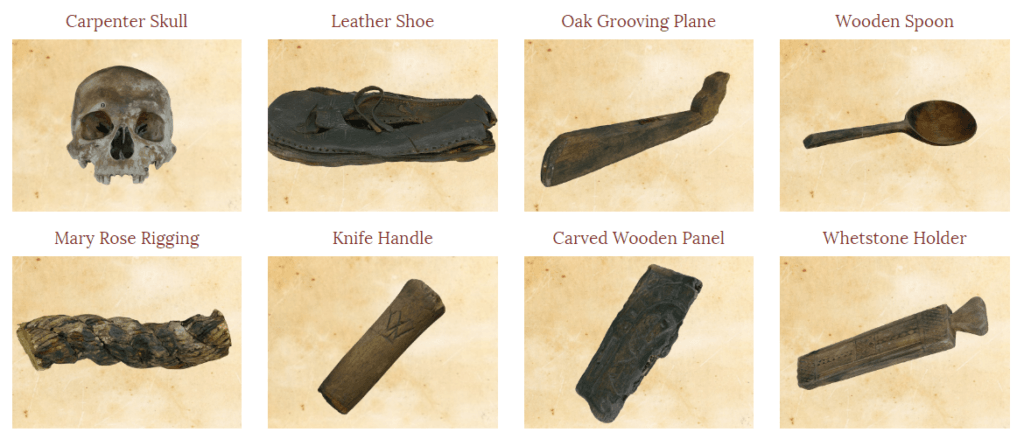 Although 3D printing has been celebrated as a technology of the future, it has also proven to have immense value in unearthing our past as well. All across the world, 3D scanning and 3D printing are being increasingly utilized to restore and replicate ancient artifacts. From monuments that have been destroyed due to the warpath of ISIS to Greek artifacts that have faded away alongside ancient cities, there are number of examples of the critical role that 3D technologies have played in this field. Even the British Library, which is the largest in the world, has recently launched a massive collection of 3D scanned historical texts and worldly artifacts.
Although 3D printing has been celebrated as a technology of the future, it has also proven to have immense value in unearthing our past as well. All across the world, 3D scanning and 3D printing are being increasingly utilized to restore and replicate ancient artifacts. From monuments that have been destroyed due to the warpath of ISIS to Greek artifacts that have faded away alongside ancient cities, there are number of examples of the critical role that 3D technologies have played in this field. Even the British Library, which is the largest in the world, has recently launched a massive collection of 3D scanned historical texts and worldly artifacts.
Once again, 3D printing technology will help bring history back to life, this time with artifacts from Henry VIII’s sunken warship the Mary Rose. Researchers from Swansea University have been closely examining the contents of the ship in order to gain a better idea of that historically important time period. As history has it, the Mary Rose sank in the Solent in 1545, which led to the loss of 500 men and the king’s flagship. Over 400 years later, in 1982, the warship was recovered from the seabed, possessing thousands of Tudor-era artifacts and 92 skeletons of the crew.
Over the last five years, Swansea University has been working with the Mary Rose Trust, at first to investigate the biomechanics of medieval and Tudor archery. After the initial project, their collaboration extended to the use of 3D printing, molecular biology, and imaging technologies, all of which have helped bring these objects and time period back to life. A number of original artifacts were placed on display, including a shoe, plane, rope, and wood from the ship, as well as a recovered knife handle and carved panel. As for replicas, the display included a 3D printed skull belonging to a crew member, longbows, arrows, a bleeding bowl, and a miniature compass, among other artifacts.
“The 3D images of skulls and objects that we recently made available online will allow researchers around the world to study them in detail, leading to new insights into the world of the Tudors,” said Nick Owen, a biochemist at Swansea University’s College of Engineering and leader of this project. “We hope that our findings will not only inspire a new generation of would be scientists but also re-create a slice of life from The Mary Rose nearly 500 years after she was sunk.”
Not only are these 3D printed objects being displayed at Swansea University, they educational institution has also collaborated with the Mary Rose Trust to release interactive 3D images of skulls and other artifacts. The display, which opened November 11 at the Swansea University’s Great Hall on the Bay Campus, was celebrated as part of Swansea University’s recently held Research and Innovation Awards. This accolade celebrates the positive impact of the university’s research projects, which range anywhere from drug policy to robotics. Discuss in the Mary Rose forum at 3DPB.com.
[Source/Images: South Wales Evening Post]Subscribe to Our Email Newsletter
Stay up-to-date on all the latest news from the 3D printing industry and receive information and offers from third party vendors.
You May Also Like
3D Printing Unpeeled: Biofuel Waste to Filament & Sustainable Photopolymers
I can’t ever remember a day with so many potentially high impact news stories have come out. In one story, we all know that there are problems with the safety...
Finnair Hires AM Craft to 3D Print Plastic Parts for Aircraft Interiors
Riga-based AM Craft, a supplier specialized in 3D printing aviation components and certified under EASA Part 21G, announced a significant achievement today. The company will assist in upgrading Finnair’s A320...
3DPOD Episode 198: High Speed Sintering with Neil Hopkinson, VP of AM at Stratasys
Neil Hopkinson, a pioneering 3D printing researcher, played a pivotal role in developing a body of research that is widely utilized today. He also invented High Speed Sintering (HSS), also...
3D Printing Webinar and Event Roundup: May 12, 2024
Webinars and events are picking up in the AM industry this week! ASTM International continues its Professional Certificate Course and Stratasys continues its advanced in-person trainings, while 3D Systems is...


































